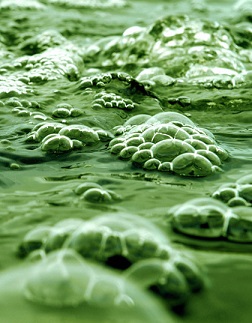Algae probe returns concerns
 Dangerous neurotoxins have been discovered for the first time in algal bloom samples from NSW waterways, new research shows.
Dangerous neurotoxins have been discovered for the first time in algal bloom samples from NSW waterways, new research shows.
The toxin β-methylamino-L-alanine (BMAA) and its toxic structural isomer 2,4 – diaminobutyric acid (2,4-DAB) have been detected in algal samples collected from both rural and urban waterways.
These neurotoxins, produced by cyanobacteria that are a feature of algal blooms in Australian rivers and lakes, have been the subject of a number of recent studies linking them to neurodegenerative disease patient clusters.
The toxins are associated with amyotrophic lateral sclerosis (ALS) or motor neurone disease (MND).
The new study was conducted as part of efforts to create standard methods to detect and quantify these toxins.
The researchers say their findings highlight the need for the development of a robust monitoring program for Australian cyanobacterial blooms.
Waterways in the Murray –Darling basin in eastern Australia are of particular concern because the semi-arid environment, use of river water for irrigation, slow moving water and high risk of eutrophication make these rivers susceptible to frequent large scale blooms.
“Cyanobacteria are an ancient group of microorganisms found in both terrestrial and aquatic environments and they produce a diverse range of bioactive molecules some of which are toxic to humans and animals,” says UTS researcher and Chief Investigator on the study, Associate Professor Kenneth Rodgers.
“There is very strong evidence now that these toxins are associated with the formation in the brain of protein aggregates similar to what we see in Alzheimer’s disease and ALS amyotrophic lateral sclerosis or motor neurone disease, patients,” Dr Rodgers says.
The researchers say that BMAA is of particular concern because it is fairly ubiquitous and accumulates through the food chain which increases the risk of human exposure through diet.
“BMAA is also thought to be capable of spreading via aerosols and a recent North American epidemiological study confirms that people who live near water bodies that experience frequent cyanobacterial blooms have an increase ALS risk,” UTS Faculty of Science PhD candidate and lead author of the study Brendan Main says.







 Print
Print